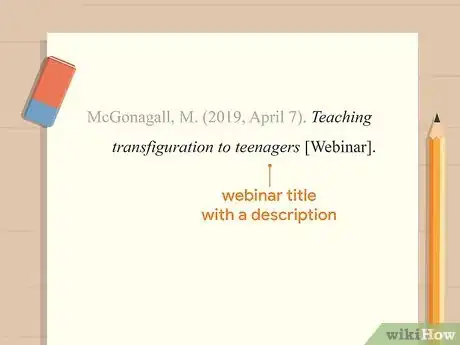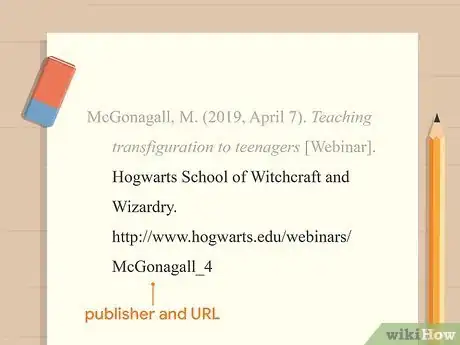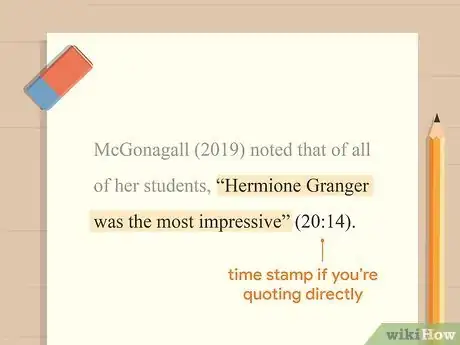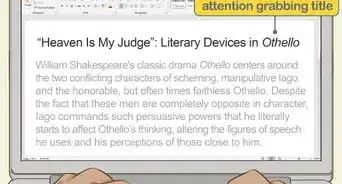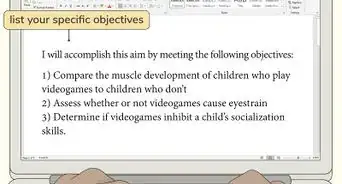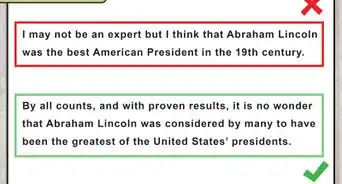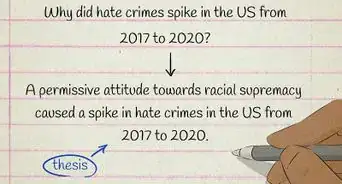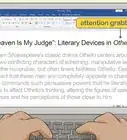This article was co-authored by wikiHow staff writer, Jennifer Mueller, JD. Jennifer Mueller is a wikiHow Content Creator. She specializes in reviewing, fact-checking, and evaluating wikiHow's content to ensure thoroughness and accuracy. Jennifer holds a JD from Indiana University Maurer School of Law in 2006.
This article has been viewed 21,271 times.
Learn more...
If you're writing a research paper, you might want to use information you learned in a webinar as a source. When using the citation style of the American Psychological Association, your format will differ depending on whether the webinar was recorded. If the webinar is available online, your Reference List entry would follow the format for an online video. However, if it isn't available, you would cite it as a personal communication.[1] Since personal communications don't provide any information that your reader can recover for themselves, you don't need a Reference List entry — you would only use an in-text citation.[2]
Steps
Reference List Entry
-
1Start your entry with the name of the author or presenter. Type the last name of the author or presenter, followed by a comma. Then, type their first initial, followed by a period. If their second initial is given, include that after the first.[3]
- Example: McGonagall, M.
-
2Add the date for the webinar in parentheses. Include as specific a date as possible, typing the year first, followed by a comma. Then type the month and date. Don't abbreviate the name of the month. Place a period outside the closing parenthesis.[4]
- Example: McGonagall, M. (2019, April 7).
Advertisement -
3Provide the title of the webinar along with a description. Type the title of the webinar in sentence case, capitalizing only the first word and any proper nouns. If there is a subtitle, type a comma at the end of the title, then add the subtitle in sentence case. After the title, type the word "Webinar" in square brackets for the description, followed by a period. Italicize the title but not the description.[5]
- Example: Teaching transfiguration to teenagers [Webinar].
-
4Close with the name of the publisher or sponsor and the URL. Add the name of the institution, organization, corporation, or other entity that published or sponsored the webinar, followed by a period. Then close your entry with a full direct URL to the webinar online. Don't place a period at the end of the URL.[6]
- Example: McGonagall, M. (2019, April 7). Teaching transfiguration to teenagers [Webinar]. Hogwarts School of Witchcraft and Wizardry. http://www.hogwarts.edu/webinars/McGonagall_4
Reference List Entry Format:
Author/Presenter, A. A. (Year, Month Date). Title of webinar in sentence case [Webinar]. Publisher/Sponsor. URL
In-Text Citation
-
1List the author and year in a basic in-text citation. Whenever you paraphrase or mention the webinar, add a parenthetical citation to the end of the sentence, inside the closing punctuation. Within your parenthetical, type the author's last name, followed by a comma, then the year that the webinar was published.[7]
- For example, you might write: Teaching transfiguration is particularly challenging with teenagers because they are still struggling to understand themselves (McGonagall, 2019).
-
2Place the parenthetical after the author's name in your text. In some situations, you'll want to include the author or presenter's name directly in your text. If you do this, there's no need to repeat the author's name in a parenthetical citation at the end of the sentence. Instead, put the date in a parenthetical immediately after the author's name.[8]
- For example, you might write: According to McGonagall (2019), younger children are much more adept at transfiguration even though the spells are quite difficult.
-
3Include a time-stamp if you quote directly from the webinar. For direct quotes, use a time-stamp so your readers can go directly to the quoted material and listen to it for themselves. You only need the time-stamp for the start of the quote, not the full range. The citation goes outside the closing quotation marks of the quote but inside the closing punctuation of the sentence.[9]
- For example, you might write: McGonagall (2019) noted that of all of her students, "Hermione Granger was the most impressive" (20:14).
- If you're including a full parenthetical citation at the end of the sentence, type a comma after the year, then type the time stamp.
-
4Use a "personal communication" citation if the webinar wasn't recorded. If a webinar isn't recorded, your readers don't have any way to go back and review the original source themselves, so a Reference List entry isn't necessary. For a full parenthetical citation, type the author or presenter's name followed by a comma, then type the words "personal communication" followed by a comma, then type the date in month-day-year format.[10]
- For example, you might write: McGonagall (personal communication, April 7, 2019) discussed the rigors of the Hogwarts grading and record-keeping process.
Tip: If the webinar wasn't recorded, "personal communication" is all you need, according to the APA manual. However, you might want to ask your instructor if they want you to include any additional information, either in-text or in a Reference List entry.
References
- ↑ http://writeanswers.royalroads.ca/faq/199138
- ↑ https://writeanswers.royalroads.ca/faq/199118
- ↑ http://writeanswers.royalroads.ca/faq/199138
- ↑ http://writeanswers.royalroads.ca/faq/199138
- ↑ http://writeanswers.royalroads.ca/faq/199138
- ↑ https://libguides.dixie.edu/c.php?g=57887&p=371732
- ↑ http://writeanswers.royalroads.ca/faq/199138
- ↑ http://writeanswers.royalroads.ca/faq/199138
- ↑ http://writeanswers.royalroads.ca/faq/199138


